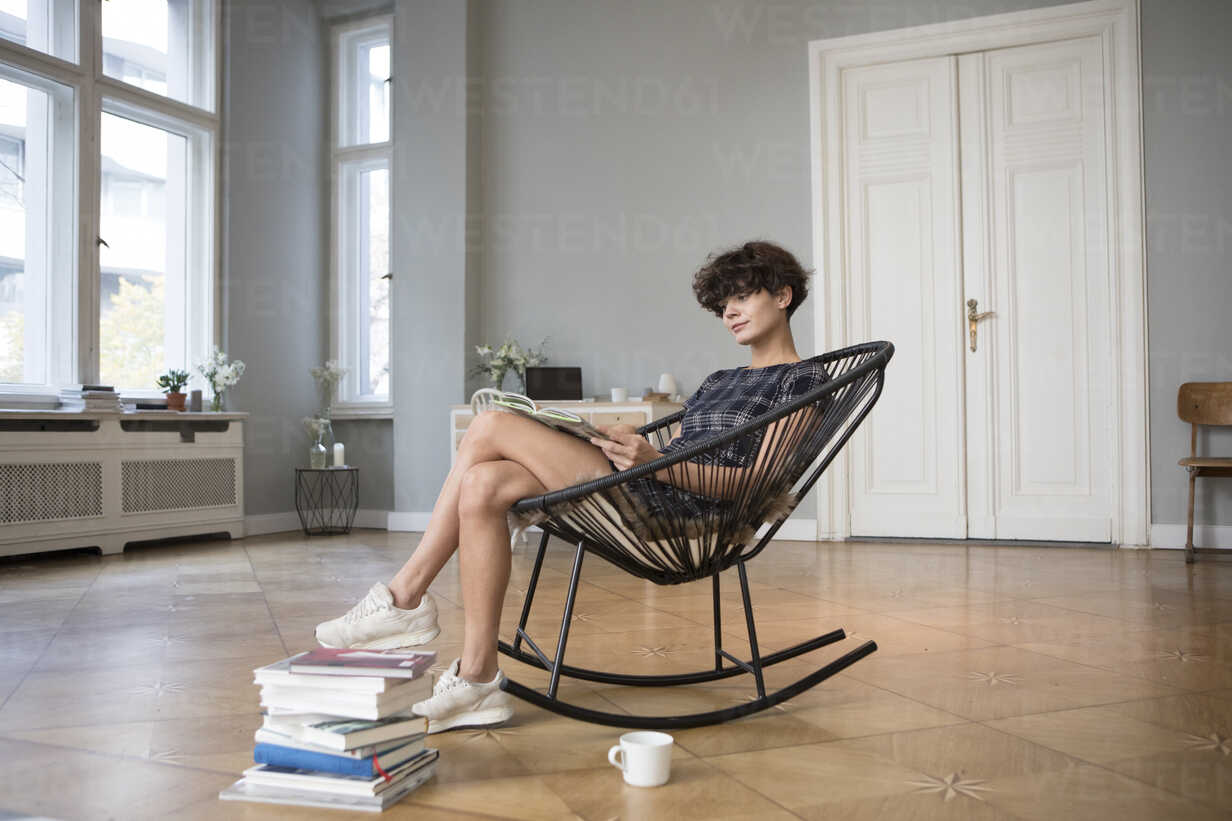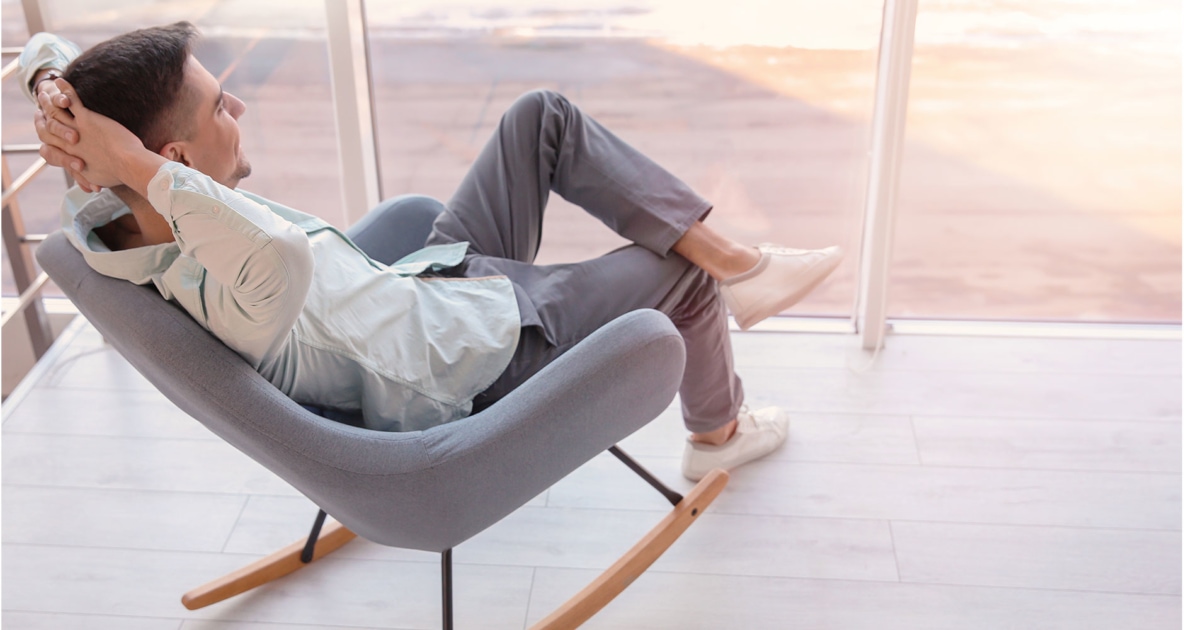The History and Evolution of Rocking Chairs

The rocking chair, a seemingly simple piece of furniture, has a rich and fascinating history that spans centuries and continents. Its evolution from early prototypes to the diverse range of designs we see today reflects changing cultural values, technological advancements, and evolving concepts of comfort and leisure.
Early Origins and Prototypes
The origins of rocking chairs can be traced back to ancient times, with evidence suggesting that rocking motions were used for relaxation and entertainment in various cultures. For instance, in ancient Egypt, depictions of rocking chairs have been found on tomb paintings, suggesting their use by the elite. While these early forms might not have resembled modern rocking chairs, they illustrate the concept of rocking for comfort and enjoyment.
The Rocking Chair in Colonial America
The rocking chair as we know it today emerged in colonial America during the 17th and 18th centuries. The invention of the “slat-back” rocking chair, characterized by its curved slats and rocking base, is often attributed to Benjamin Franklin, though this claim remains debated. Regardless of its precise origins, the rocking chair quickly gained popularity in colonial society, becoming a symbol of comfort, leisure, and domesticity.
The Rocking Chair as a Cultural Icon, Rocking in a rocking chair
The rocking chair became a cultural icon in America, representing a sense of tranquility and homeliness. Its association with relaxation and contemplation made it a popular choice for reading, conversation, and simply enjoying the passing of time. This image of the rocking chair as a symbol of American life was further cemented by its presence in numerous works of art, literature, and popular culture.
Key Innovations and Advancements in Rocking Chair Design
Over the centuries, rocking chair design has undergone significant innovations, driven by technological advancements and changing aesthetic preferences. Some notable advancements include:
- The Introduction of Metal and Spring Mechanisms: In the 19th century, the introduction of metal and spring mechanisms led to the development of rocking chairs with greater durability and smoother rocking motions. These innovations paved the way for more elaborate and intricate rocking chair designs.
- The Rise of Mass Production: The development of mass production techniques in the late 19th and early 20th centuries made rocking chairs more affordable and accessible to a wider range of consumers. This led to a proliferation of different styles and designs, catering to diverse tastes and preferences.
- Modern Design Innovations: In recent decades, contemporary designers have experimented with innovative materials, shapes, and forms, pushing the boundaries of traditional rocking chair design. These modern designs often incorporate sleek lines, minimalist aesthetics, and innovative features that enhance comfort and functionality.
The Physics and Mechanics of Rocking Motion

The gentle back-and-forth motion of a rocking chair is a captivating and comforting experience, but the physics behind it is surprisingly intricate. It involves a delicate interplay of forces, gravity, and the chair’s design, resulting in a rhythmic movement that soothes both body and mind.
The Physics of Rocking
The rocking motion of a chair is governed by the principles of momentum and energy conservation. As the chair rocks back and forth, it continuously exchanges potential energy (stored energy due to its position) and kinetic energy (energy of motion). When the chair is at its highest point, it has maximum potential energy and minimum kinetic energy. As it begins to descend, potential energy is converted into kinetic energy, increasing the chair’s speed. At the bottom of the rocking arc, the chair has maximum kinetic energy and minimum potential energy. This exchange of energy continues throughout the rocking cycle, creating a smooth and rhythmic motion.
Types of Rocking Mechanisms
Rocking chairs utilize various mechanisms to achieve their characteristic movement. The most common type is the curved rocker, where the chair legs are curved, allowing the chair to pivot back and forth. The flat rocker uses a flat, elongated base that rocks on a surface. This design provides a more stable rocking experience, but it may not be as smooth as the curved rocker.
- Curved Rocker: This classic design features curved legs that act as a pivot point, enabling the chair to smoothly rock back and forth. The curvature of the legs determines the rocking arc and the overall feel of the motion.
- Flat Rocker: This design employs a flat, elongated base that rests on a surface, creating a rocking motion as the chair tilts forward and backward. Flat rockers typically offer a more stable rocking experience compared to curved rockers.
- Spring Rocker: This mechanism incorporates springs within the chair’s frame, which add a springy and bouncy element to the rocking motion. This type of rocker provides a more dynamic and energetic rocking experience.
Factors Influencing Stability and Comfort
The stability and comfort of a rocking chair are influenced by several factors, including:
- Rocking Arc: The size and shape of the rocking arc determine the intensity and smoothness of the rocking motion. A larger rocking arc allows for a wider range of motion, while a smaller arc provides a gentler and more controlled rocking experience.
- Chair Weight Distribution: The weight distribution of the chair plays a crucial role in its stability. A well-balanced chair with a low center of gravity will rock smoothly and safely.
- Seat Design: The shape and size of the seat affect the comfort and support provided by the chair. A contoured seat with proper lumbar support can enhance comfort and reduce strain on the back.
- Rocking Surface: The surface on which the chair rocks also influences stability and comfort. A smooth, even surface will provide a consistent and predictable rocking experience, while an uneven surface can create an unsteady and uncomfortable rocking motion.
The Benefits and Drawbacks of Rocking: Rocking In A Rocking Chair
Rocking chairs have long been associated with relaxation and tranquility. The gentle, rhythmic motion they provide can have a profound impact on our physical and mental well-being. While the benefits of rocking are widely recognized, there are also potential drawbacks to consider. This section delves into the advantages and disadvantages of rocking, exploring the science behind its effects and offering a balanced perspective.
Physiological Benefits of Rocking
Rocking has been shown to have a range of positive effects on our bodies. The rhythmic motion can help to stimulate the vestibular system, which is responsible for balance and spatial awareness. This stimulation can improve circulation, reduce muscle tension, and promote relaxation. Additionally, rocking can have a calming effect on the nervous system, reducing stress and anxiety. Studies have shown that rocking can even improve sleep quality, helping individuals fall asleep faster and experience deeper, more restful sleep.
Psychological Benefits of Rocking
Beyond its physical benefits, rocking can also have a profound impact on our mental well-being. The gentle, repetitive motion can be incredibly soothing, providing a sense of comfort and security. Rocking can also help to reduce feelings of anxiety and stress, creating a sense of calm and tranquility. For individuals struggling with emotional distress, rocking can be a valuable tool for self-soothing and emotional regulation.
Potential Drawbacks of Rocking
While rocking offers numerous benefits, it’s important to acknowledge its potential drawbacks. Some individuals may experience motion sickness or dizziness when rocking, particularly if they are sensitive to motion or have a history of vestibular issues. Additionally, rocking can be disruptive to others, especially in shared spaces. It’s essential to be mindful of the environment and consider the potential impact of rocking on others.
Comparison with Other Relaxation Techniques
Rocking chairs offer a unique form of relaxation that can be compared to other methods, such as meditation, yoga, or deep breathing exercises. While all these techniques aim to reduce stress and promote relaxation, they differ in their mechanisms and effectiveness. Rocking provides a gentle, physical stimulation that can be particularly soothing for individuals who find other relaxation techniques challenging. However, it’s important to note that rocking may not be suitable for everyone, and individual preferences and needs should be considered.
Rocking in a rocking chair is a timeless pastime, offering a gentle rhythm and a sense of tranquility. For those seeking a classic and elegant addition to their home, a pottery barn white rocking chair is a perfect choice.
Its timeless design and durable construction ensure years of enjoyment, making it a cherished piece that enhances any space. Whether you’re reading a book, enjoying a cup of tea, or simply reflecting on the day, a rocking chair provides a comfortable and inviting haven for relaxation.
Rocking in a rocking chair is a timeless tradition, offering a soothing rhythm that can lull you into relaxation. For die-hard Red Sox fans, this experience can be elevated to a whole new level with a red sox rocking chair , a piece of furniture that embodies both comfort and unwavering team spirit.
Whether you’re enjoying a game day broadcast or simply basking in the sunshine, a Red Sox rocking chair provides the perfect setting to revel in your fandom.